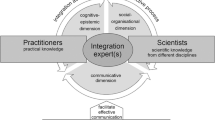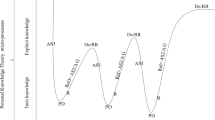Abstract
Communication to promote behaviours like energy saving can use significant resources. What is less clear is the comparative value of different approaches available to communicators. While it is generally agreed that ‘bottom-up’ approaches, where individuals are actively involved rather than passive, are preferable to ‘top-down’ authority-led projects, there is a dearth of evidence that verifies why this should be. Additionally, while the literature has examined the mechanics of the different approaches, there has been less attention paid to the associated psychological implications. This paper reports on an exploratory comparative study that examined the effects of six distinct communication activities. The activities used different communication approaches, some participative and others more top-down informational. Two theories, from behavioural studies and communication, were used to identify key variables for consideration in this field-based evaluation. The evaluation aimed to assess not just which activity might be most successful, as this has limited generalisability, but to also gain insight into what psychological impacts might contribute to success. Analysis found support for the general hypothesis that bottom-up approaches have more impact on behaviour change than top-down. The study also identified that, in this instance, the difference in reported behaviour across the activities related partly to the extent to which intentions to change behaviour were implemented. One possible explanation for the difference in reported behaviour change across the activities is that a bottom-up approach may offer a supportive environment where participants can discuss progress with like-minded individuals. A further possible explanation is that despite controlling for intention at an individual level, the pre-existence of strong intentions may have an effect on group success. These suggestive findings point toward the critical need for additional and larger-scale studies. The challenges associated with field-based evaluative research and the role of theory are discussed. The design approach and measures used in this study may be useful to other evaluations that seek to compare different communicative approaches.


Similar content being viewed by others
Notes
The participation referred to here is at the level of the activity. It is acknowledged that there is a parallel debate about participation of those running programmes to be involved in their evaluations but that is not the focus here (for an overview of that debate, see Weaver and Bradley Cousins 2007).
Cronbach’s test uses the mean score of question items to measure the strength of their relationship to others it is proposed to group with them.
References
Abelson, J., Forest, P.-G., Eyles, J., Smith, P., Martin, E., & Gauvin, F.-P. (2003). Deliberations about deliberative methods: issues in the design and evaluation of public participation processes. Social Science & Medicine, 57(2), 239–251.
Abelson, J., Forest, P.-G., Eyles, J., Casebeer, A., Martin, E., & Mackean, G. (2007). Examining the role of context in the implementation of a deliberative public participation experiment: results from a Canadian comparative study. Social Science & Medicine, 64(10), 2115–2128.
Abrahamse, W., Steg, L., Vlek, C., & Rothengatter, T. (2005). A review of intervention studies aimed at household energy conservation. Journal of Environmental Psychology, 25, 273–291.
Ajzen, I. (1991). The theory of planned behavior. Organizational Behavior and Human Decision Processes, 50, 179–211.
Ajzen, I. (2002). Constructing a TPB questionnaire: conceptual and methodological considerations. http://people.umass.edu/aizen/pdf/tpb.measurement.pdf. Accessed 11 Feb 2012.
Ajzen, I. (2005). Attitudes, personality and behavior (2nd ed., Mapping social psychology). Maidenhead: Open University Press.
Ajzen, I., & Fishbein, M. (1980). Understanding attitudes and predicting social behavior (Paperbackth ed.). Englewood Cliffs: Prentice-Hall.
Anable, J., Lane, B., & Kelay, T. (2006). An evidence base review of public attitudes to climate change and transport behaviour. London: The Department for Transport. http://www.dft.gov.uk/publications/review-of-public-attitudes-to-climate-change-and-transport-summary-report. Accessed 11 Feb 2012.
Armitage, C., & Christian, J. (2003). From attitudes to behaviour: basic and applied research on the theory of planned behaviour. Current Psychology, 22(3), 187–195.
Armitage, C., & Conner, M. (2001). Efficacy of the theory of planned behaviour: a meta-analytic review. British Journal of Social Psychology, 40(4), 471–499.
Barr, S. (2003). Strategies for sustainability: citizens and responsible environmental behaviour. Area, 35, 227–240.
Bass, S., Dalal-Clayton, B., & Pretty, J. (1995). Participation strategies for sustainable development (Environmental planning issues) (Vol. 7). London: International Institute for Environment and Development.
Blackstock, K. L., Kelly, G. J., & Horsey, B. L. (2007). Developing and applying a framework to evaluate participatory research for sustainability. Ecological Economics, 60(4), 726–742.
Coleman, M., Wright, A., Brown, N., & Firth, S. (2009). Domestic information, communication and entertainment (ICE) appliance monitoring: a practical perspective and implications for inter-disciplinary research. In Energy efficiency in domestic appliances and lighting: proceedings of the 5th international conference EEDAL ‘09, 16–18 June 2009, Berlin. Luxemburg: European Union.
Conner, M., & Armitage, C. J. (1998). Extending the theory of planned behavior: a review and avenues for further research. Journal of Applied Social Psychology, 28(15), 1429–1464.
Conner, M. T., Perugini, M., O’Gorman, R., Ayres, K., & Prestwich, A. (2007). Relations between implicit and explicit measures of attitudes and measures of behavior: evidence of moderation by individual difference variables. Personality and Social Psychology Bulletin, 33(12), 1727–1740.
Cook, T. D., & Groom, C. (2004). The methodological assumptions of social psychology: the mutual dependence of substance theory and method choice. In C. Sansone, C. C. Morf, & A. T. Panter (Eds.), The Sage handbook of methods in social psychology (p. xxvii). Thousand Oaks: Sage. 528 p.
Daigle, J. J., Hrubes, D., & Ajzen, I. (2002). A comparative study of beliefs, attitudes, and values among hunters, wildlife viewers and other outdoor recreationists. Human Dimensions of Wildlife, 7, 1–19.
Darnton, A. (2004). The impact of sustainable development on public behaviour: Report 1 of Desk Research commissioned by COI on behalf of DEFRA. London.
Ereaut, G., & Segnit, N. (2006). Warm words: how are we telling the climate story and can we tell it better? London: IPPR.
Evans, W. D. (2008). Social marketing campaigns and children’s media use. The Future of Children, 18(1), 181–283.
Evans, W. D., Uhrig, J., Davis, K., & McCormack, L. (2009). Efficacy methods to evaluate health communication and marketing campaigns. Journal of Health Communication, 14(4), 315–330.
Filmer-Wilson, E., & Anderson, M. (2005). Integrating human rights into energy and environmental programming: A reference paper. http://www.beta.undp.org/content/dam/aplaws/publication/en/publications/environment-energy/www-ee-library/local-development/integrating-human-rights-into-energy-and-environment-programming/Integrating_Human_Rights_into_Energy_and_Environment_Programming.pdf. Accessed 11 Feb 2012.
Grunig, J. E., & Grunig, L. S. (1989). Toward a theory of the public relations behavior of organizations: review of a program of research. Public Relations Research Annual, 1, 27.
Hardi, P., & Zdan, T. (1997). Assessing sustainable development: principles in practice. Winnipeg: International Institute for Sustainable Development.
Hoyle, R. H., & Robinson, J. C. (2004). Mediated and moderated effects in social psychological research: measurement, design and analysis issues. In C. Sansone, C. C. Morf, & A. T. Panter (Eds.), The Sage handbook of methods in social psychology (p. xxvii). Thousand Oaks: Sage. 528 p.
Huang, Y.-H. (2004). Is symmetrical communication ethical and effective? Journal of Business Ethics, 53(4), 333–352.
Jaccard, J., & Turrisi, R. (2003). Interaction effects in multiple regression (2nd ed.). Thousand Oaks: Sage.
Johnson, B. T., & Eagly, A. H. (1989). Effects of involvement on persuasion: a meta-analysis. Psychological Bulletin, 106(2), 290–314.
Kim, Y.-S. (2005). Organizational structure and internal communication: an organizational-level analysis. In Paper presented at the 8th annual international public relations research conference—the impact of PR in creating a more ethical world: why can’t we all get along? South Miami, Florida, March 2005.
Kim, H., Pakenas, L., Ridge, R., Albert, S., & Jordan, G. (2007). An evaluation framework for a portfolio of research, development & demonstration programs. In Paper presented at the International Energy Program Evaluation conference, Chicago, Illinois, August 2007.
Lamie, J., & Ball, R. (2010). Evaluation of partnership working within a community planning context. Local Government Studies, 36(1), 109–127.
Lewin, K. (1951). Field theory in social science: selected theoretical papers (1st ed.). New York: Harper.
Lipsey, M. W. (1993). Theory as method: small theories of treatments. New Directions for Program Evaluation, 1993, 5–38.
Lucumí, D. I., Sarmiento, O. L., Forero, R., Gomez, L. F., & Espinosa, G. (2006). Community intervention to promote consumption of fruits and vegetables, smoke-free homes, and physical activity among home caregivers in Bogotá, Colombia. Preventing Chronic Disease, 3(4). http://www.Cdc.Gov/pcd/issues/2006/oct/06_0014.Htm. Accessed 11 Feb 2012.
Maruyama, G. (2004). Program evaluation, action research, and social psychology. In C. Sansone, C. C. Morf, & A. T. Panter (Eds.), The Sage handbook of methods in social psychology (p. xxvii). Thousand Oaks: Sage. 528 p.
Newburn, T. (2001). What do we mean by evaluation? Children & Society, 15(1), 5–13.
Noar, S. M. (2009). Challenges in evaluating health communication campaigns: defining the issues. Communication Methods and Measures, 3, 1–11.
Owens, S., & Driffill, L. (2008). How to change attitudes and behaviours in the context of energy. Energy Policy, 36(12), 4412–4418.
Park, D. H., Lee, J., & Han, I. (2007). The effect of on-line consumer reviews on consumer purchasing intention: the moderating role of involvement. International Journal of Electronic Commerce, 11(4), 125–148.
Petty, R. E., & Cacioppo, J. T. (1986). The elaboration likelihood model of persuasion. Advances in Experimental Social Psychology, 19, 123–205.
Reed, M. (2008). Stakeholder participation for environmental management: a literature review. SRI PAPERS. Leeds: Sustainability Research Institute (SRI), School of Earth and Environment, The University of Leeds.
Rowe, G., & Frewer, L. (2005). A typology of public engagement mechanisms. Science Technology & Human Values, 30(2), 251–290.
Salovey, P., & Steward, W. T. (2004). Methodological challenges and scientific rewards for social psychologists conducting health behavior research. In C. Sansone, C. C. Morf, & A. T. Panter (Eds.), The Sage handbook of methods in social psychology. London: Sage.
Sejwacz, D., Ajzen, I., & Fishbein, M. (1980). Predicting and understanding weight loss: intentions, behaviors, and outcomes. In I. Ajzen & M. Fishbein (Eds.), Understanding attitudes and predicting social behavior. Englewood Cliffs: Prentice-Hall.
Snyder, L. B. (2001). How effective are mediated health campaigns? In R. E. Rice & C. K. Atkin (Eds.), Public communication campaigns (3rd ed., p. xi). Thousand Oaks: Sage. 428 p.
Snyder, L. B. (2007). Health communication campaigns and their impact on behavior. Journal of Nutrition Education and Behavior, 39(2, Supplement 1), S32–S40.
Stufflebeam, D. L., & Shinkfield, A. J. (2007). Evaluation theory, models, and applications (1st ed.). San Francisco: Jossey-Bass.
Timotijevic, L., & Raats, M. M. (2007). Evaluation of two methods of deliberative participation of older people in food-policy development. Health Policy, 82(3), 302–319.
Updegraff, J. A., Sherman, D. K., Luyster, F. S., & Mann, T. L. (2007). The effects of message quality and congruency on perceptions of tailored health communications. Journal of Experimental Social Psychology, 43(2), 249–257.
Weaver, L., & Bradley Cousins, J. (2007). Unpacking the participatory process. Journal of Multidisciplinary Evaluation, 1(1). Available: http://survey.ate.wmich.edu/jmde/index.php/jmde_1/article/view/144. Accessed 11 Mar 2010.
Wood, W., & Kallgren, C. A. (1988). Communicator attributes and persuasion: recipients’ access to attitude-relevant information in memory. Personality and Social Psychology Bulletin, 14(1), 172–182. doi:10.1177/0146167288141017.
Acknowledgments
An earlier version of this paper was presented at the International Energy Program Evaluation Conference in Paris, June 2010. The authors would like to thank Charles Michaelis, Sarah R. Payne and anonymous reviewers for comments on earlier versions. The research was funded by a bursary from the UK Engineering and Physical Sciences Research Council.
Author information
Authors and Affiliations
Corresponding author
Appendices
Appendix 1
Appendix 2
Rights and permissions
About this article
Cite this article
Wilson, C., Irvine, K.N. Bottom-up communication: identifying opportunities and limitations through an exploratory field-based evaluation. Energy Efficiency 6, 91–104 (2013). https://doi.org/10.1007/s12053-012-9161-y
Received:
Accepted:
Published:
Issue Date:
DOI: https://doi.org/10.1007/s12053-012-9161-y




